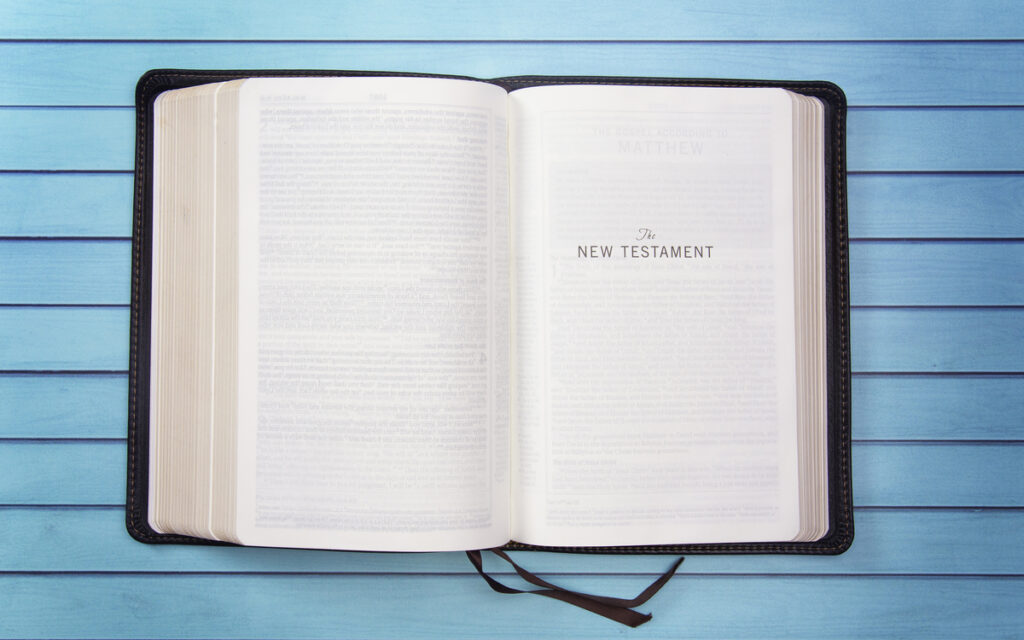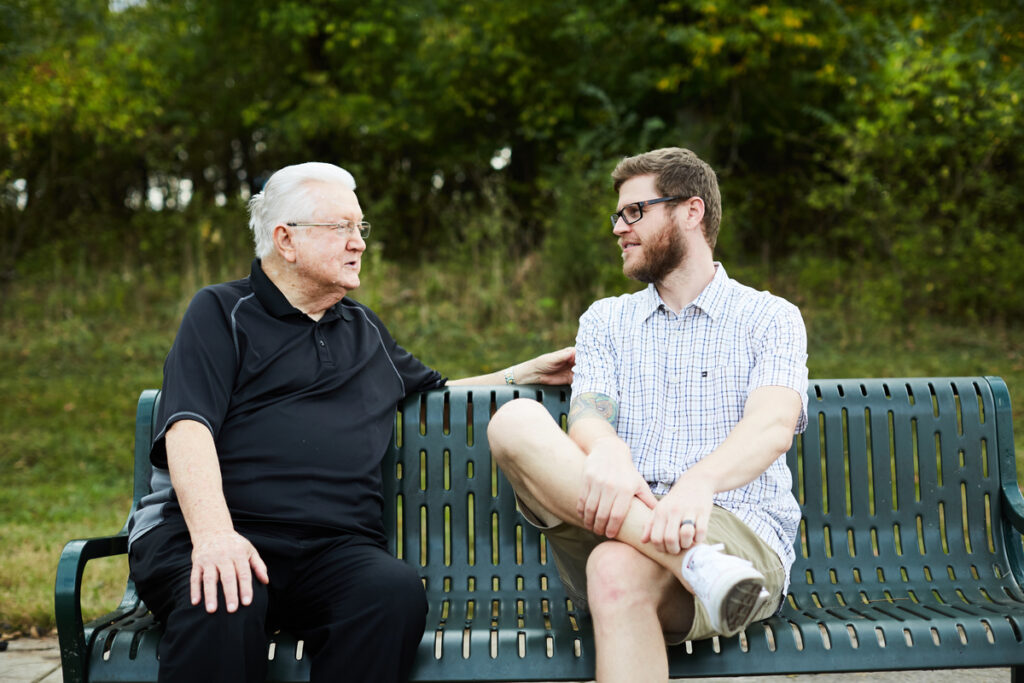During my lifetime, I have witnessed the church scrambling to respond to what felt like a new “issue” every decade. In the 1960s it was the Woodstock generation who heralded a “sexual revolution.” During the 1970s the focus turned to abortion in the wake of the landmark Roe v. Wade Supreme Court decision. In the 1980s our society, including the church, witnessed a massive rise in divorce, and the subsequent normalization of divorce throughout our culture. In the 1990s the internet gave rise to new challenges related to the wide accessibility to digital pornography, as well as the rise of violent video games. It was also the decade in which Dr. Jack Kevorkian made doctor-assisted suicide a part of the national conversation. The first decade of the 21st century brought a dramatic rise in the acceptance of homosexual practice, ultimately leading to the 2015 landmark case of Obergefell vs. Hodges which legalized same-sex marriage in all fifty states. We have also seen the mainstreaming of highly sexualized images used in advertising. This has been followed by the increased awareness of the power of social media and digital images to shape our very understanding of what it means to be human. In this decade, the emphasis has turned to gender reassignment and the growing notion that our gender should be de-coupled from any biological markers and, instead, be socially determined based on our own autonomous feelings and perceptions.
After being hit with wave after wave of challenges, it would be easy to conclude that the church is exhaustingly fighting a dozen different wildfires and wondering where the next outbreak will be. However, what if these challenges are actually not a dozen different issues, but are really all about one issue? It has become increasingly clear that all of these issues, among others which could be noted, are all about the body. Our fundamental problem is that we need a proper theology of the body. The purpose of this article is to set forth the basic building blocks of a “theology of the body.” My hope is that we might come to understand that our body is not merely a biological category, but a theological one as well. Could it be that our bodies are actually talking to us and we have not been listening? Could it be that many of the greatest mysteries of God’s nature and redemptive plan are interwoven into our very design? I believe that the answer to both of these questions is, Yes!
Seven Building Blocks of a Theology of the Body
To build a “theology of the body” I will briefly highlight seven of the key building blocks of this doctrine. The first two building blocks arise out of God’s created design of the human body.
The Created Body
First, Christians believe that creation is good, and therefore it is trustworthy. Our faith that God created the world and that it is an expression of his goodness is fundamental to our faith (Heb. 11:3). In the creation account in Genesis 1 the creation is declared “good” seven times. The early church battled a false teaching known as Gnosticism which believed that the material world including the body was untrustworthy or evil, and the “real” you was somehow trapped inside. This false idea has resurfaced in our own days teaching us that our bodies are not trustworthy. The God of biblical revelation, in contrast, created our bodies in his image and declared us to be very good (Gen. 1:31).
Second, our physical bodies are pointers to spiritual mysteries. At the dawn of creation, God was already preparing the human race for the eventuality (which was eternally present to him) that he would send his only Son into the world in that great mystery we call the incarnation. God designed us to be the perfect receptacles for his greatest revelation, knowing that someday Jesus would enter the world in a human body. The book of Hebrews places Psalm 40:6 onto the lips of Jesus when He declared, “a body you have prepared for me” (Heb. 10:5). Therefore, our very bodies point to the mystery of the incarnation.
The Related Body
The first two building blocks are about our bodies as the object of God’s created power. The next three building blocks focus on how our bodies are designed to relate to other bodies.
Third, marriage is a pointer to the greater mystery of Christ and the church (Eph. 5:32). Just as your body is a window to the incarnation, so marriage is a window into the relationship of Christ and His church. Marriage is not a socially constructed arrangement which conforms to the wider cultural understanding of marriage; namely, a functional, utilitarian arrangement which satisfies our social and sexual needs and provides economic security. Instead, the Bible gives us not a commodified view of marriage but a covenantal view of marriage designed to be a pointer to the great mystery of Christ and his church. The biblical account sets forth the design of marriage as being unitive (the two shall become one flesh), procreative (be fruitful and multiply), binary (He created them male and female), and donative or self-giving (marriage points to the sacrifice of Christ for his church, the Bride). It is amazing that the Bible begins and ends with a marriage. Adam and Eve are married in Eden, and the Bible culminates in the marriage supper of the Lamb, where Christ is eternally wed to His church (Rev. 19:6-8).
Fourth, childbearing is a pointer to the divine mystery of the Trinity. Just as marriage points to Christ and the Church, so through the mystery of childbirth, God has given a pointer to his own inner life. It is through the bearing of children that we are given the privilege of participating with God in the sacred act of creation. God created men and women and made them image-bearers. Then, through His grace, He allows us to participate with him in the creation of new image-bearers. Through this grace, the family becomes the basic “triune” (father, mother, child) building block of all community, pointing to the mystery of the inner community within the very life of God: Father, Son, and Holy Spirit.
Five, celibacy is a pointer to the eschatological life. Scripture reveals that there are actually two ways our bodies are “related.” The first is the spousal meaning of the body which the previous two building blocks highlighted. They summon us joyfully into the life of marriage and childbearing. However, there is a second meaning of the body which Jesus highlights in the New Testament, namely, the celibate meaning of the body. Jesus teaches in Matthew 22:30 that “in the resurrection people will neither marry nor be given in marriage.” Here Jesus reminds us that as important as marriage is, it is not an end in itself, but a pointer to a greater spiritual reality, the final eternal union with Jesus Christ. The point is that some people have already been gifted by God in this life to anticipate the eschatological state to which we are all moving. Those called to celibacy are already living out the future reality in the present.
The Sacramental Body
The last two building blocks in this “theology of the body” are about the sacramental nature of the body.
Sixth, our bodies are sacraments for the world. The church coined the word “sacrament” in the third century by combining the Latin word sacer (holy) with the Greek word mysterion (mystery). Thus, a sacrament is a “holy mystery.” This was originally a broad term for a wide variety of ways in which the physical world pointed to divine, supernatural mysteries. Gradually, in the Protestant tradition, the term sacrament became associated only with the two holy practices of baptism and the Lord’s Supper, and their meaning became privatized. However, the sacraments were never meant to be isolated from our public witness in the world.
When we are baptized, we are not merely baptized by faith, i.e., a personal confession of your faith in Jesus Christ. We are also baptized into the faith, i.e., we become part of a public witness of the good news of Jesus Christ before the eyes of the world. When Martin Luther famously threw his inkwell at the Devil in Marburg Castle in the year 1521, he did not shout, “I was baptized,” but “I am baptized” (baptizatus sum). We walk into the world as the baptized people of God, holy mysteries of redemption. Baptism is not just something we “did,” it is an ongoing mark of who we are in the world. When we take the broken bread in the Lord’s Supper, we are taking His broken life into ourselves, and through God’s grace we become God’s broken bread for the world. In other words, the Lord’s Supper is not merely for us, but it mysteriously transforms us into spiritual bread for a hungry and needy world.
Seventh, our bodies have a sacramental nature which transforms the whole of ‘ordinary’ life.
So much of our lives are made up of daily routines like washing dishes, folding clothes, vacuuming floors, preparing meals, taking out the trash, weeding the garden, mowing grass, putting gas in the car, or changing diapers. A proper theology of the body helps to raise our awareness of the theological significance of our bodies in these daily, often repetitive, tasks of each day. For the Christian, these tasks are not mundane but are the very means by which we can develop liturgical rhythms in our daily lives. When we do these tasks, we are saying to our parents, our friends, our spouses, and even to God, “This is my body, given for you.” These words, reflecting the sacred words of Jesus in his institution of the Lord’s Supper, should be reflected in the whole of our lives as our bodies become small reflections of his great sacrifice. The so-called “menial” tasks become filled with sacred meaning for us. This is why Paul says that our greatest spiritual worship is to “offer our bodies as living sacrifices” (Rom. 12:1).
Conclusion
A theology of the body begins, quite sublimely, with God creating the world, and it ends with, shall we say, changing diapers. Yet, this demonstrates how important our bodies are in God’s plan. Our bodies are speaking to us and pointing us to a whole range of divine mysteries: the incarnation, the mystery of the church, the Trinity, the final eschaton at the end of the ages, to name a few. Our culture has unwittingly scrambled the message of the body and even the church has missed this message. The result is that the church is more often known for what we are against and few seem to know what we are for! This brief survey is to help you understand that we are for the body. The recovery of a theological, not merely biological view of the body will be increasingly vital as we seek to navigate the particular challenges to Christian faith in our time.
Published November 11, 2024



